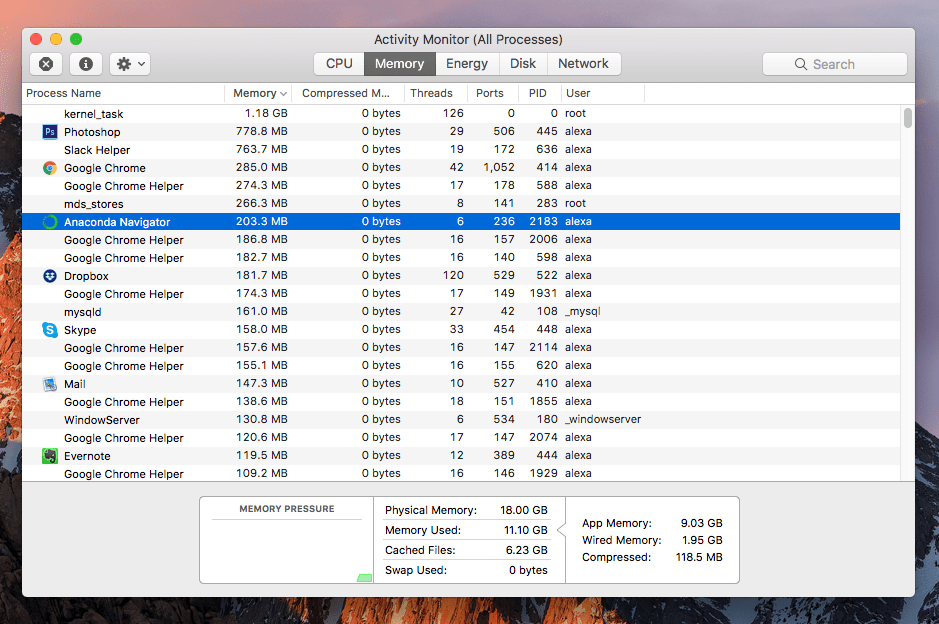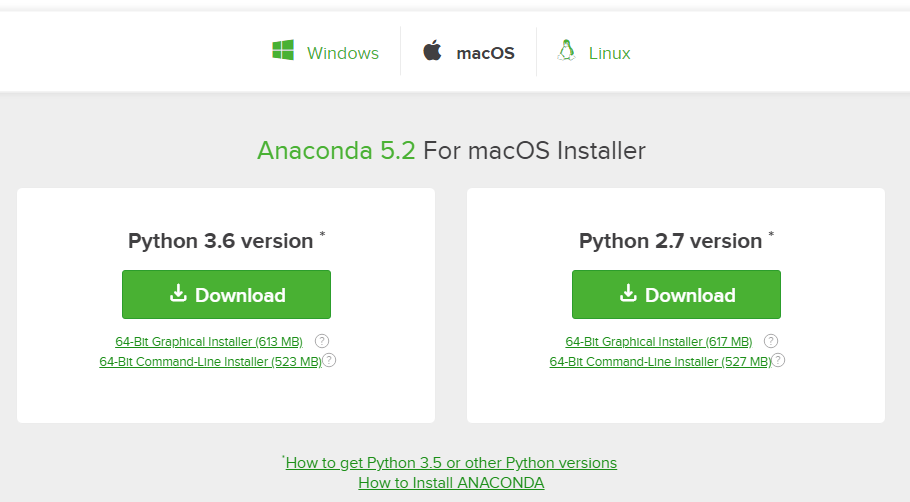How to Install Anaconda Python? Anaconda is a popular tool used in machine learning and Data Science. It is a free and open-source distribution of Python and R language. It aims to simplify the management and deployment of packages i.e. It gives you the liberty to create a separate environment with the packages that are needed in your project. The Jupyter Notebook is a web-based interactive computing platform. The notebook combines live code, equations, narrative text, visualizations, interactive dashboards and other media. To uninstall Anaconda open a terminal window and remove the entire anaconda install directory: rm -rf /anaconda.You may also edit /.bashprofile and remove the anaconda directory from your PATH environment variable, and remove the hidden.condarc file and.conda and.continuum directories which may have been created in the home directory with rm -rf /.condarc /.conda. My anaconda don’t My anaconda don’t My anaconda don’t want none Unless you got buns, hon. Boy-toy named Troy used to live in Detroit Big dope dealer money, he was getting some coins Was in shootouts with the law, but he live in a palace B-bought me Alexander McQueen, he was keeping me stylish Now that’s real, real, real Gun in my purse, bitch, I came dressed to kill Who wanna go first?
A conda environment is a directory that contains a specificcollection of conda packages that you have installed. Forexample, you may have one environment with NumPy 1.7 and itsdependencies, and another environment with NumPy 1.6 for legacytesting. If you change one environment, your other environmentsare not affected. You can easily activate or deactivateenvironments, which is how you switch between them. You can alsoshare your environment with someone by giving them a copy of yourenvironment.yaml file. For more information, seeManaging environments.
Conda directory structure¶
ROOT_DIR¶
The directory that Anaconda or Miniconda was installed into.
EXAMPLES:
/pkgs¶
Also referred to as PKGS_DIR. This directory containsdecompressed packages, ready to be linked in conda environments.Each package resides in a subdirectory corresponding to itscanonical name.
/envs¶
The system location for additional conda environments to becreated.
The following subdirectories comprise the default Anacondaenvironment:
/include/shareOther conda environments usually contain the same subdirectoriesas the default environment.
Virtual environments¶
A virtual environment is a tool that helps tokeep dependencies required by different projectsseparate by creating isolated spaces for them thatcontain per-project dependencies for them.
Users can create virtual environmentsusing one of several tools such asPipenv or Poetry, or a conda virtualenvironment. Pipenv and Poetry are based around Python'sbuilt-in venv library, whereas conda has its own notion of virtualenvironments that is lower-level (Python itself is a dependency providedin conda environments).
Scroll to the right in the table below.
Some other traits are:
Python virtual environment | Conda virtual environment | |
|---|---|---|
Libraries | Statically link, vendor libraries in wheels,or use apt/yum/brew/etc. | Install system-level libraries as conda dependencies. |
System | Depend on base system install of Python. | Python is independent from system. |
Extending environment | Extend environment with pip. | Extended environment with conda or pip. |
Non-Python dependencies | Manages non-Python dependencies (R, Perl,arbitrary executables). | |
Tracking dependencies | Tracks binary dependencies explicitly. |
Why use venv-based virtual environments¶
Anaconda Oxygen Address
You prefer their workflow or spec formats.
You prefer to use the system Python and libraries.
Your project maintainers only publish to PyPI, andyou prefer packages that come more directly from theproject maintainers, rather than someone else providingbuilds based on the same code.

Why use conda virtual environments?¶

You want control over binary compatibility choices.
You want to utilize newer language standards, such as C++ 17.
You need libraries beyond what the system Python offers.
You want to manage packages from languages other than Pythonin the same space.
Workflow differentiators¶
Some questions to consider as you determine your preferredworkflow and virtual environment:
Is your environment shared across multiple code projects?
Does your environment live alongside your code or in a separate place?
Do your install steps involve installing any external libraries?
Do you want to ship your environment as an archive of some sortcontaining the actual files of the environment?
Anaconda Oxygen Anaconda
Package system differentiators¶
There are potential benefits for choosing PyPI or conda.
PyPI has one global namespace and distributed ownership of that namespace.Because of this, it is easier within PyPI to have single sources for a packagedirectly from package maintainers.

Conda has unlimited namespaces (channels) and distributed ownership of agiven channel.As such, it is easier to ensure binary compatibility within a channel usingconda.
Getting started with JupyterLab
The installation guide contains more detailed instructions
Anaconda For Mac Os X
Install with conda
If you use conda, you can install it with:
Install with pip
If you use pip, you can install it with:
If installing using pip install --user, you must add the user-level bin directory to your PATH environment variable in order to launch jupyter lab. If you are using a Unix derivative (FreeBSD, GNU / Linux, OS X), you can achieve this by using export PATH='$HOME/.local/bin:$PATH' command.
Run JupyterLab
Once installed, launch JupyterLab with:
Getting started with the classic Jupyter Notebook
conda
We recommend installing the classic Jupyter Notebook using the conda package manager. Either the miniconda or the miniforge conda distributions include a minimal conda installation.

Then you can install the notebook with:
pip
If you use pip, you can install it with:
Congratulations, you have installed Jupyter Notebook! To run the notebook, run the following command at the Terminal (Mac/Linux) or Command Prompt (Windows):
See Running the Notebook for more details.
Getting started with Voilà
Installation
Voilà can be installed using conda or pip. For more detailed instructions, consult the installation guide.
conda
If you use conda, you can install it with:
pip
If you use pip, you can install it with:
